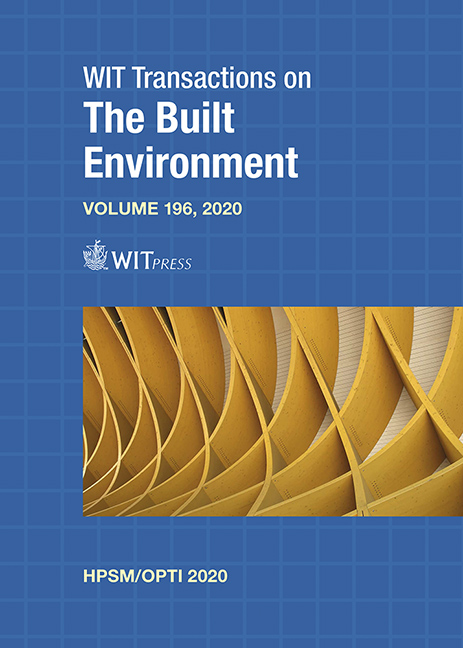ON THE STRUCTURAL DESIGN OF CHARACTERISTIC DECKS FOR THREE-SPAN POSTENSIONED ROAD FLYOVERS
Price
Free (open access)
Transaction
Volume
196
Pages
12
Page Range
169 - 180
Published
2020
Paper DOI
10.2495/HPSM200181
Copyright
WIT Press
Author(s)
FERNANDO GONZÁLEZ-VIDOSA, JULIAN ALCALÁ GONZÁLEZ, FERRAN NAVARRO FERRER
Abstract
This paper deals with the optimized design of two characteristic three-span road flyovers. The first characteristic sample structure is the deck of a 20-36-20 m flyover, which is typical of flyovers over double-lane, double track motorways. The second characteristic structure is the deck of a 12-17-12 m flyover, which is typical of flyovers over double-track, high-speed railways. The optimization procedure caters for the structural design of multiple voided slab decks for postensioned road flyovers. The design is encompassed by an optimized heuristic procedure. The paper shows the efficiency of a heuristic optimized design by simulated annealing (SA) method. The evaluation of solutions follows the mainframe of European and Spaniard codes of practice for structural concrete. The computation of stress resultants is carried out by an internal programming code. Road loading is in accordance to Eurocode 1. The decks have a typical 11 m width. The concrete section, prestressing and the passive reinforcement are defined by 35 design variables. These variables are for the compressive strength of concrete, 5 variables for the geometry of the cross-section and 29 variables for the active and passive reinforcement. The 5 geometrical variables of the cross-section are the depth, the width of the bottom nucleus, the length of the lateral cantilevers and the thicknesses of the starting and ending parts of the cantilever. The number and diameter of the circular voids is derived from the cross-section and the active prestressing. The 20-36-20 sample results in a slab-deck of 1.55 m of depth and 8 tendons of 17 ASTM strands. The 12-17-12 sample results in a slab-deck of 1 m of depth and 6 tendons of 10 ASTM strands. Computer running times are about 3,400 seconds. It is concluded that the optimization procedure is apt and reliable for the design of postensioned slab decks.
Keywords
three-span postensioned bridges, structural design, heuristic optimization, simulated annealing





